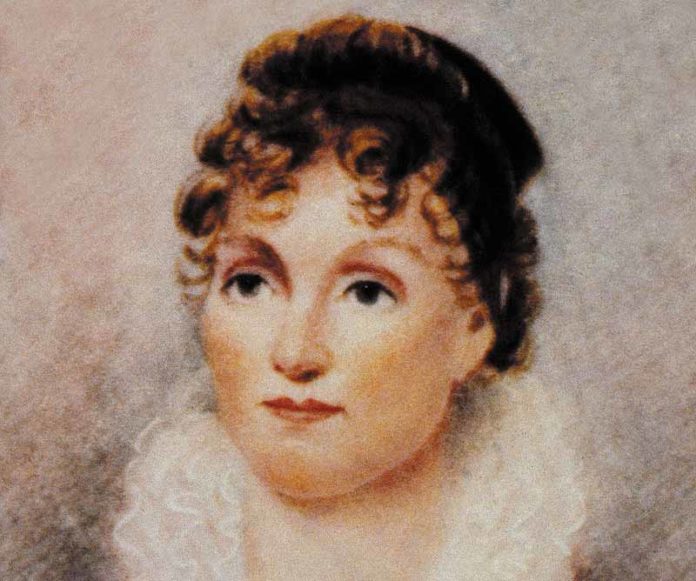Martin Van Buren’s wife never made it to the White House. She died eighteen years before her husband was elected President. Still, this “almost First Lady” played an important role in her husband’s life and career, and should be remembered.
Born on March 8, 1783, Hannah Hoes was a very distant relative of Van Buren’s through his mother. Hannah was raised in a Dutch home, just as Van Buren was, and never entirely lost her distinctive Dutch accent. Hannah knew Van Buren her entire life. In fact, they were childhood sweethearts. Van Buren always called her Jannetje, which is Dutch for Hanna.
They were married on February 21, 1807, at the home of Hannah’s sister in Catskill, New York, when she was 23 and he was 24. Theirs was a very happy marriage. Van Buren was reportedly devoted to Hannah, who was rather shy, an unusual trait for a politician’s wife. She managed to overcome her shyness, and functioned as his official hostess as he began his political career. They had four children together before she contracted tuberculosis and died at the age of 35.
At the time of her death, her husband was a New York state senator, and already making a name for himself. Shortly after her death, he was elected a U.S. Senator, and then governor of New York. Her effect on his career continued to be felt through her four sons, all of whom served in important political roles for their father during his career, and especially his Presidency.
Abraham Van Buren (1807-1873), the eldest, graduated from West Point and served in the army. He resigned from the army in 1837 to serve as secretary to his father during his single term as President. He rejoined the army during the Mexican War, and was promoted for bravery (they gave promotions rather than medals at that time) at the battles of Contreras and Churubusco.
John Van Buren (1810-1866) was a lawyer. He served as secretary of the American legation in London during his father’s stint as minister-designate to Great Britain (see the earlier article “The Eaton Affair: An American Soap Opera). He was later elected to the U.S. House of Representatives where he emerged as a leading opponent of slavery. He later allied himself with the Barnburner faction of the New York Democratic Party, which opposed all compromise with the South on the issue of slavery.
Martin Van Buren, Jr. (1812-1855) was a student of political science and history. He served as a political aide to his father throughout his career and compiled the information used by the former President in writing his memoirs.
Smith Thompson Van Buren (1817-1876) also served as a political aide to his father. He drafted many of his father’s speeches and, as literary executor of his father’s estate, edited the Van Buren Papers. He married a niece of Washington Irving.
Martin Van Buren never remarried, although his name was romantically linked to two women later in his life. One of these was Ellen Randolph, a granddaughter of Thomas Jefferson. He was a middle-aged U.S. Senator and she was still in her mid-twenties. She later married someone else, and Van Buren referred to her in his memoirs as “a very interesting young lady . . . and my warm friend.”
At the age of 68, he supposedly proposed to Margaret Sylvester, the daughter of his law professor a half-century before. She supposedly turned him down. They remained close friends.
Hannah Hoes Van Buren never got to see her husband as President, or her sons in important national political positions. But she contributed much to their success, especially in the upbringing of her four sons until her death. Her grace and charm did much to help Van Buren’s political career get started in the tumultuous political climate of New York. She never made it to the White House, but her presence was felt during her husband’s Presidency more than that of many women who did serve as First Lady.



